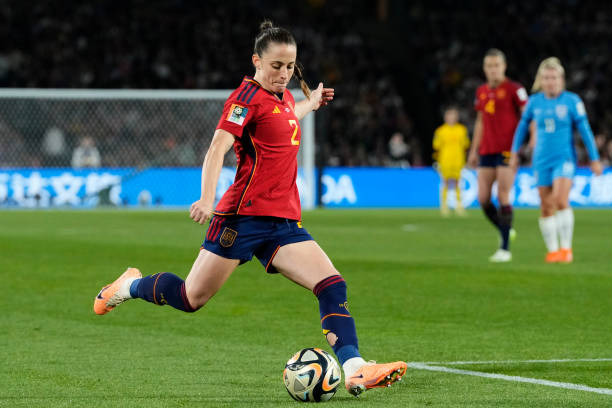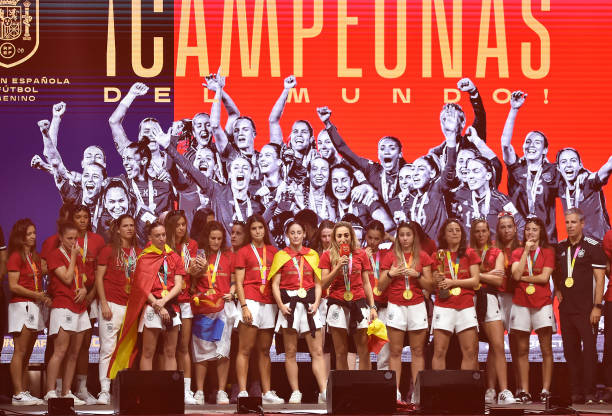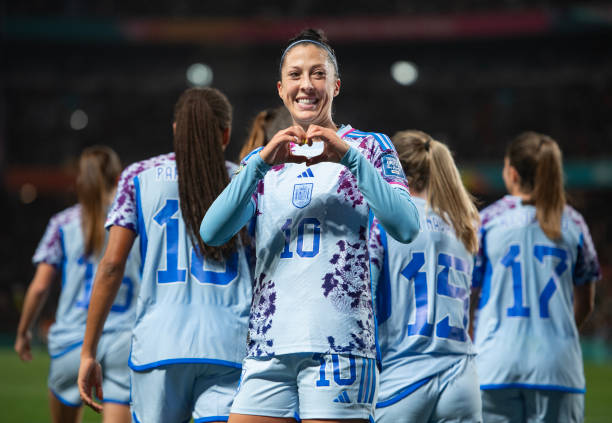
The Women’s United Soccer Association made history in 2001 becoming the first-ever professional women’s soccer league. The American league paid its players a “professional” salary and attracted many of the top female players from around the globe.
The WUSA had eight teams from Boston in the northeast to Atlanta in the south to San Jose in the west. Six of the eight teams were on the east coast, making it financially difficult for teams to travel from the east coast to play the two California-based franchises. Meanwhile the middle of the country didn’t have a single team.
The WUSA was built using the 20 members of the United States Women’s National team that won the World Cup in 1999. The league’s founders hoped the American public would flock to see these new female superstars in stadiums or on television.
The players were treated really well as the first professional women’s soccer players. The 20 members of the USWNT received over $80,000 per season. Although the WUSA had corporate sponsorships and the public relations campaign saw players appear on locally and nationally televised programs, the WUSA went away just as quickly as it arrived.
It took just three seasons for the WUSA to run out of money, and it was reported that the league lost an estimated $100 million during its short life. It is now a forgotten sports league that left a blip on the sports map in the US soccer scene much like the American Soccer League or the International Soccer Football League.
How much do the top women’s soccer leagues pay?
It is now over 20 years since the first women’s professional soccer league debuted. After the WUSA closed its doors, there was the Women’s Professional Soccer (WPS) league before the creation of the National Women’s Soccer League in 2010.
The NWSL is the current top level of women’s soccer in America, and like its predecessors, it has had plenty of growing problems. The NWSL’s most recent issues had nothing to do with the growth of the league, rather it was the treatment of players by owners, coaches, and staff.
The term professional is used for the NWSL and the way the players are compensated. Yet, until recently, the league’s players weren’t all treated professionally in terms of money. Compensation for NWSL players changed at the start of the chaotic 2022 season, as the league’s first-ever collective bargaining agreement (CBA) ensured players received a “living wage”. The term “living wage” offers up different interpretations.
The CBA took 10 years to put in place. Some league representatives would likely claim the lack of a CBA and paying low wages (unliving wages?) helped the league grow to its current level.
One of the main points of the CBA was the increase in minimum wages league-wide. The NWSL set a league minimum of $35,000 and a maximum of $75,000 per season. According to the Bureau of Labor Statistics, the median salary for Americans in 2022 was just over $54,000.
It is a good start for female professional soccer players in the US, but there is still plenty of room to grow. The WNBA’s players have a minimum salary of $60,500 per season. However, the league has more longevity and there is an argument to be made about America’s interest in women’s basketball compared to soccer.
How does the WSL compare to the NWSL in wages?
One of the common arguments in women’s soccer is the difference between the compensation received by female and male players. Unfortunately, the same sponsors and the fans are not available for the women’s game. Men’s wages cannot be paid to female footballers simply due to the lack of sponorships and fan interest.
Yet, looking at the disparities in men’s and women’s soccer isn’t necessarily the right area to focus on. Women’s soccer leagues and the compensation paid should be compared among the leagues. Comparing women’s leagues is a better comparison than putting them side-by-side with men’s football wages.
England’s Women’s Super League was founded in March 2010, three years before the NWSL. The BBC reported in August 2022 that the average WSL player earns £47,000 per season (approx. $54,000).
While the average WSL player in England earns around $54,000 per season, the minimum yearly salary in the division is $24,500. The big difference between the WSL and the NWSL is the maximum salary players can earn. The WSL’s top earners can pull down $250,000 per season. In addition, players can have sponsorship deals that increase their earnings.
Follow the Money in Women’s Soccer
England women’s captain Leah Williamson is one of the WSL’s high earners. After England’s success at the Women’s Euros in the summer of 2022, Williamson was projected a net worth of £8 million (approx. $9.2m). However, much of her net worth comes from sponsorship deals with Nike and Pepsi. Williamson’s wages at Arsenal are between £150,000 and £200,000 ($172,137.75 and $229,517.00).
When the WSL became full “professional”, the football world praised its move to give female players a “living wage”. However, the professionalism at each club isn’t equal. Each team’s staff differs, with some clubs putting far more resources into their women’s teams.
This doesn’t necessarily have anything to do with the amount of money each player earns, but it does show clubs are skimping on paying personnel the men’s teams would have at their disposal. The difference in backroom staff and other personnel at a club can make the difference between a team winning the WSL title and being relegated.
How much do other women’s soccer leagues pay players?
The NWSL and the WSL are the two biggest women’s football leagues in terms of English-speaking, western nations, but these are not the only leagues attracting top-level players
France’s Division 1 Féminine has some of the richest clubs in women’s football in Paris Saint-Germain and Lyon. Yet, the top players at these clubs are making far less than the top players in America or England. Lyon defender Wendie Renard and Paris forward Kadidiatou Diani each make €37,000 (approx. $42,460.64). Norwegian star Ada Hegerberg is on €35,000 (approx. $40,165.47).
Outside of the Division 1 Féminine’s top two teams, the majority of female players earn less than €2,000 (approx. $2,295.17) a month. Some of the players competing for teams outside France’s top two aren’t even on professional contracts. The league still hands out semi-professional and amateur contracts to players.
Any fan wondering why top women’s players from the US don’t stick around Division 1 Féminine may now understand. Moreover, with the amount of money the CBA offers women’s players in the NWSL, it makes sense for many American players to remain based at home, even if the best competition is in Europe.
Women’s sports are massive down under, much like in the US. However, women’s soccer is still growing, and the minimum salary for the W-League is just over $16,000AUD.
Australia’s top women’s player, Sam Kerr, has spent much of her career playing abroad throughout the year. She currently plays for WSL club, Chelsea, and is one of the best strikers in women’s football. Kerr signed a two-and-a-half-year contract with Chelsea in 2019 for a reported $410,000 a season. She also has a contract with Nike worth $1m, making her one of the sport’s highest earners annually.
Plenty of Room for Growth
Female footballers are not the world’s highest-paid women’s athletes. Tennis currently pays the most to female athletes. However, much of their earnings are made in sponsorship and endorsement deals, like their football counterparts.
Women’s football has come a long way since the WUSA debuted in 2001. Just 20 years ago, it would have been unfathomable for players to earn millions from the sport whether it be from salaries, sponsorships, or endorsements.
Women’s football may never reach the levels of the men’s game and likely won’t, but there is room for the sport to improve the amount it pays players. Unfortunately, the history of leagues ending due to overspending is still fresh in the minds of some. To pay players what they deserve, leagues must be financially viable and draw fans. It is up to football fans to show interest in women’s football if they want it to grow further.

Must See
-


Champions League
/ 9 months agoChampions League – Matchday 2
Almost in the blink of an eye we reached the second day of the...
-


Premier League
/ 9 months agoThe bad start for Poch’s Chelsea
Since Todd Boehly’s arrival as club owner in the summer of 2022, Chelsea have...
-


Premier League
/ 9 months agoJadon Sancho’s feud with Erik Ten Hag continues
Manchester United winger Jadon Sancho’s time at Old Trafford has been torrid, to say...



